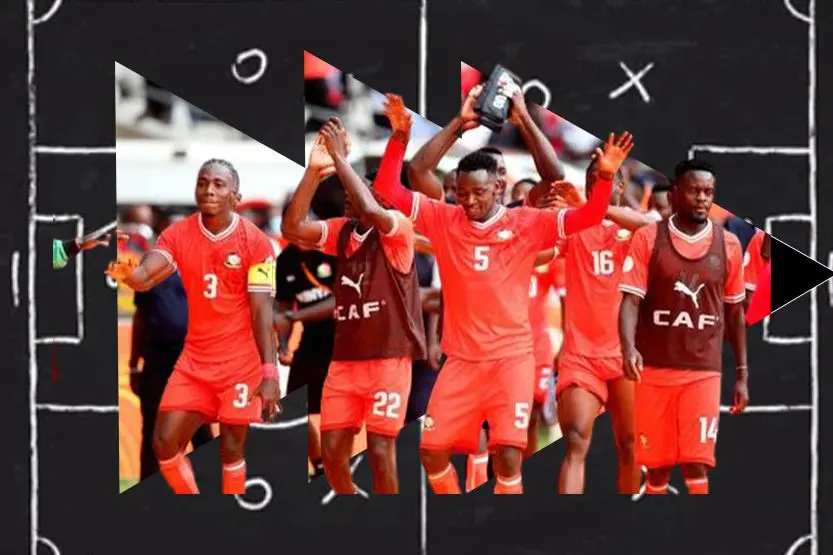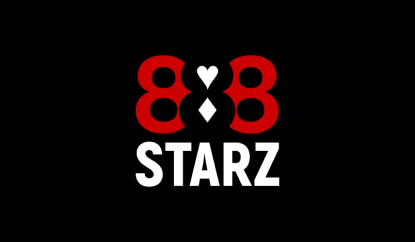Harambee Stars at CHAN 2024 became more than a tournament run, it turned into a national embrace of a team that learned how to suffer, how to seize moments, and how to dream. The 1-0 victory over Zambia at Kasarani, secured by a late Ryan Ogam finish, crowned Kenya as Group A winners and booked a home quarter-final against Madagascar. It was the night an assured campaign found its exclamation point, and a fan base rediscovered its voice.
How Kenya finished the job against Zambia
Against Zambia on Sunday, August 17 at Kasarani, Kenya were patient and purposeful, dominating long stretches without forcing the game. Austine Odhiambo stung Charles Kalumba’s gloves early, David Sakwa nearly capitalised on a defensive error, and a penalty shout just before halftime was waved away as referee Lamin Jammeh kept play moving. Those moments set the tone, Kenya controlled but kept at bay by a stubborn opponent already out of contention.
The second half tilted further in Kenya’s favour. Masoud Juma arrived at the back post with a free header on the hour, only for Kalumba to paw it away with a brilliant stop. The pressure mounted, crosses kept arriving, and Zambia laboured to clear their lines as Benni McCarthy’s side sought the incision to match their intent. Then came the decisive sequence, a neat threaded pass from Boniface Muchiri into the path of Ryan Ogam in the 75th minute, a sharp swivel, a calm finish, and Kasarani erupted.
Farouk Shikalo, on his first CHAN start, supplied the assurance that any title-chasing side needs. When Zambia finally found a clear sight at goal in the 83rd minute, Kelvin Kampamba’s strike drew a strong stop from the Kenya goalkeeper. The hosts fashioned late chances to stretch the score, Zambia made one final push, and the whistle confirmed a 1-0 win that felt as much about control as it did about courage.
The atmosphere and the discipline in the stands
The win played out to a soundtrack that was emphatic and disciplined in equal measure. CAF had imposed sanctions on Kenya following earlier crowd control breaches, capping attendance at approximately 27,000 and warning of relocations if protocols were ignored. Half of Kasarani sat empty, yet the sound was unmissable, songs, waves, seats being tapped in unison, all of it channelled into a positive, constant surge behind the players.
Security was tight and notably improved. Police were stationed every 50 meters in and around the complex, checkpoints were multilayered, and officers patrolled on horseback. On approach roads, especially Thika Road, priority access was enforced for stadium-bound traffic, a small but significant sign of logistical maturity. President William Ruto and Raila Odinga watched from the stands, and in a tournament of firsts for Kenya, this felt like another, a big event managed with poise and purpose.
The tactical strokes from Benni McCarthy
Ruthless is one word for it, timely is another. McCarthy pulled Austine Odhiambo on the hour for Muchiri and replaced Sakwa with Masoud Juma, two decisions that changed the tone and tempo. Muchiri added 1 v 1 threat and quality on the ball from both flanks, then delivered the assist that settled the contest. That blend of decisiveness and detail has been the hallmark of McCarthy’s tournament.
Kenya’s coach has mixed positional play with pragmatism. When expected to dominate the ball, he has leaned on wide width from Abud Omar on the left, with right backs like Lewis Bandi stepping inside to form an extra midfield link. Manzur Okwaro, nominally a defender, often dropped between centre backs to form a back three in build-up, creating a 3-2-5 shape that kept Kenya compact and progressive. Ryan Ogam acted as the focal point, drawing centre backs and freeing eights and wingers to attack the space.
When reduced to 10 men in earlier group games, McCarthy shifted to a low block with a 5-3-1 or 4-4-1 without the ball, closing central lanes and forcing opponents wide. That discipline frustrated Angola and Morocco, two sides who thrive in transition. The versatility was deliberate and visible, a team able to adapt, whether squeezing up to keep the ball or contracting compactly to protect a lead.
“We want to make a statement by winning tomorrow’s game so that no one can say that it was by chance but by sheer hard work, dedication and domination,” McCarthy said on the eve of the Zambia match, and the performance validated the message.
The coach also explained his brave use of Okwaro in midfield after the opening win over DR Congo, pointing to his versatility and fearlessness, and how the role forced opponents to tweak their preferred routes through the middle. It was the kind of well-reasoned gamble that defined Kenya’s identity across the group stage.
The rise of new heroes
Boniface Muchiri had been touted for years as a winger with end product, and against Zambia he delivered on that promise, bringing directness, guile, and a match-winning assist soon after stepping on. His ability to isolate defenders, win fouls, and deliver with precision from crosses and set pieces gave McCarthy a reliable late-game lever.
Ogam’s poacher’s finish, his second of the tournament after the winner against Morocco, extended a compelling arc. He held off defenders, linked play, and created space through movement, a complete centre forward performance. McCarthy had suggested the Tusker striker could be a long-term answer up front, and the striker’s CHAN displays strengthened that claim.
Further back, the spine held firm. Byrne Omondi’s shot-stopping and distribution powered three clean sheets in five matches, while Michael Kibwage’s calm authority knitted together the back line once he came into the eleven. In midfield, Alpha Chris Onyango was a persistent conduit, twice recognised as man of the match, knitting defence to attack with drive and timing.
Then there was Manzur Okwaro, the unexpected pillar as a screening midfielder. He anticipated danger, picked passing lanes, and slid into the back line in build-up to give Kenya numerical control. Those tweaks were small on paper and huge on the grass, a picture of coaching clarity meeting player bravery.
Financial fuel and national backing
When a nation leans in, players find a little more. Before the tournament, President William Ruto pledged KSh 1 million per win and KSh 500,000 per draw in the group stage, and later promised KSh 2.5 million for each player if Kenya beat Zambia. Raila Odinga also promised KSh 500,000 to each player after the Zambia victory, a further endorsement of a team reuniting the terraces.
Kenya’s squad pocketed KSh 5 million from government incentives across the group phase and the Zambia triumph. The run then delivered tangible continental reward, with CAF confirming KSh 58 million for each CHAN quarter-finalist. The champions will earn 3.5 million US dollars, the runners-up 1.2 million US dollars, and there is a graduated scale for third and fourth. It is a windfall that, if reinvested wisely, can strengthen the domestic league and fortify the pipeline that produced this campaign.
The bigger picture after Madagascar
Kenya’s quarter-final against Madagascar at Kasarani on Friday, August 22 was a drama in three acts, ascendancy, adversity, and agony. Boniface Muchiri delivered another moment of quality with a beautiful cross that Alphonce Omija headed in for the lead just after the break, and soon after Ryan Ogam thought he had doubled it, only for the effort to be ruled out for a foul in the build-up. The decision stung, the stadium gasped, and the contest tightened.
Madagascar found their lifeline when Lewis Bandi handled in the box, and Fenohasina Razafimaro converted from the spot in the 69th minute. From there it became end to end, Kenya carrying a threat, Madagascar refusing to fade, and extra time could not separate them. In the shootout, Byrne Omondi saved the Barea’s second kick, Toldo denied Kibwage, and when Omija missed, the contest ended 4-3 in favour of the visitors.
There was pain in the tears of players and staff, yet there was pride in the performance. Kenya left the tournament unbeaten in regular time with three wins and two draws, a new benchmark for a national team that had never before reached a major quarter-final. McCarthy faced the cameras and chose gratitude over grievance.
“Nothing but being proud of what we achieved. The players gave me everything every single day, really good. I cannot complain, but football can be a lottery, penalties,” he said, adding that the fans had been incredible and that Kenyan football is on the up.
From the other technical area across the group stage, Zambia coach Avram Grant offered his own grace after Kenya’s win over his side, thanking Kenyans for their hospitality and atmosphere. His parting words sharpened the sense that something bigger than a result sheet had been built across these weeks.
| CASINO | BONUS | INFO | RATING | |
|---|---|---|---|---|
|
bonus
Deposit KES 147 for up to KES 14,745 bonus + spins!
See 10 Bonuses
|
info
BK 0000683 Industry-leading software providers, over 30 casino games, BCLB license |
|||
|
bonus
Register for up to 31,400 KSH bonus on deposits!
See 12 Bonuses
|
info
No. ALSI-112310012-F15 Unique selection of slots & games |
|||
|
bonus
New players get 50 free spins and a Ksh 2500 freebet!
See 7 Bonuses
|
info
BK 0000665 PG 0000405 Good combination of online casino and betting platform |
|||
|
bonus
Refer friends, win cash prizes!
|
info
BK 0000672 PG 0000412 Mobile-friendly |
Broadcast reach and the return of full stadiums
CAF-licensed broadcasters ensured that the story travelled, with KBC Channel One, Azam, Supersport Africa, beIN and Canal Sport carrying the action. Yet the most powerful medium was the revival inside Kasarani, where tickets for earlier Kenya games had been snapped up quickly and thousands missed out as demand outpaced supply. Even with sanctions reducing capacity against Zambia, the stadium sounded full, and the players fed off that energy.
What comes next for the Stars
McCarthy was appointed in March with a dual mandate, deliver a competitive CHAN and build toward AFCON 2027, which Kenya will co-host. The first objective brought a spirited audition, the second now shifts centre stage as World Cup qualifiers arrive next month against The Gambia and Seychelles. Veteran midfielder Victor Wanyama, who praised McCarthy’s professionalism and impact, is expected to be part of that next chapter if fit and available.
There is also a practical legacy. The enforcement of safety protocols, the success of city fanzones, the traffic management around Kasarani and the response to CAF guidelines all add up to lessons that will matter for bigger hosting assignments. On the pitch, the emergence of Ogam, Okwaro, Onyango, Kibwage and the reliability of Omondi signal a player pool both deeper and more defined.
Why the Zambia win will endure
Results shape memory, yet it was the manner that was most instructive. Kenya imposed themselves with the ball, stayed alert without it, and trusted fresh legs at the right times. Muchiri’s revival, Ogam’s conviction, and Shikalo’s assurance formed the spine of a night when the group was won on merit.
For a national team learning to trust its processes, the Zambia match distilled the growth of an entire campaign. From the tactical elasticity that outwitted heavyweights to the stamina that held firm with 10 men in earlier games, the performance reflected a team that spent the group stage becoming itself.
Final word
CHAN 2024 will be remembered in Kenya for the noise, for the nuance, and for the names that grew into the jersey. The moment Ogam wheeled away against Zambia, the wave in the stands was not just celebration, it was confirmation that the team at the heart of it all had earned belief. The shootout heartbreak against Madagascar does not erase that, it underlines the fine margins that define international football.
This was a campaign of firsts and of foundations, a reminder that football’s richest rewards are not always a trophy. Sometimes they are a blueprint, a bond with supporters, and a feeling that the next time the whistle blows at Kasarani, Kenya will start not from hope but from expectation.










